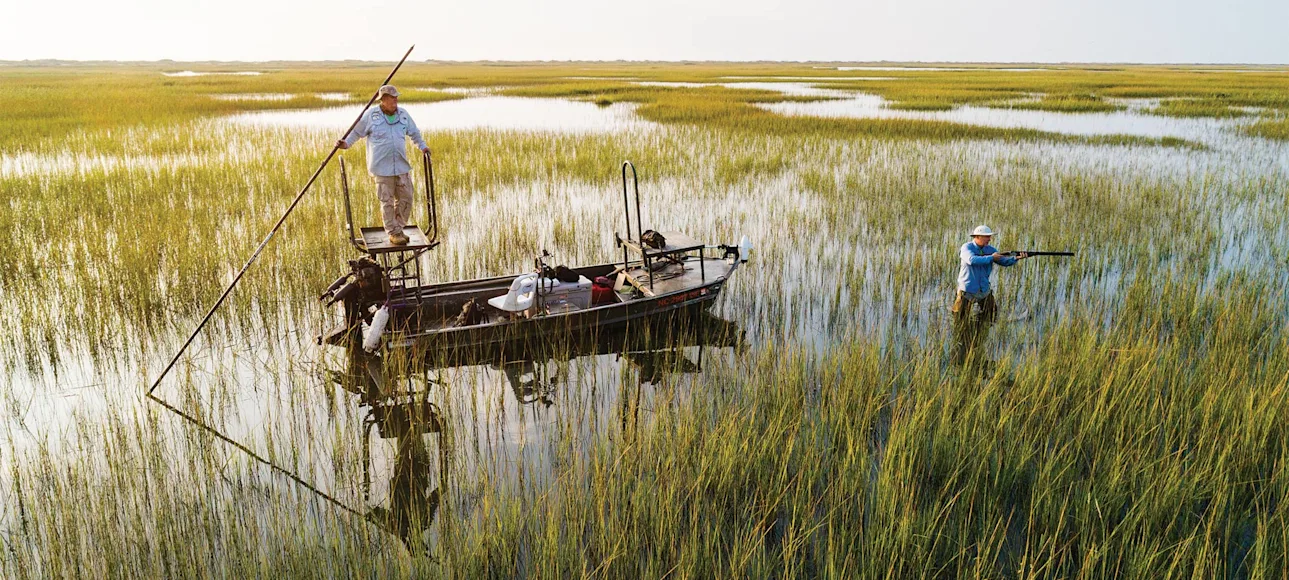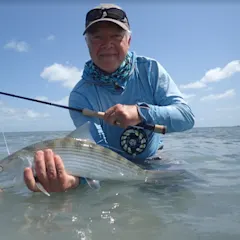From the back of the skiff, on a homemade poling platform bolted to the johnboat hull, Walter “Joe Guide” Dinkins is taking no chances. “Watch close, now,” the 59-year-old says. “Watch good. These rail birds will hide in no more grass than you can hold in your hand, and still you can’t see ’em.” I watch—I think I watch pretty darn good—but in the salt marshes of North Carolina’s Cape Fear River, on a Super Moon tide with an early sun and not a ripple on the surface, watching the water is like looking into a mirror. I mark one clapper rail before it somehow vanishes in the reeds—even though there doesn’t seem to be enough cover in this clump of cordgrass to hide a clam. In the silver polish of the early-morning salt marsh, every stalk of grass appears tripled: There’s the reed above the water, its reflection on the surface, and its underwater stem bent at a confusing angle below. The rail has vanished in plain sight, until Dinkins pushes the skiff a few feet deeper into the marsh, and the hard shells of periwinkle snails scraping the aluminum hull sound like long rips of paper. Suddenly, not one but two clapper rails vault from the sparse fringe like they’ve leapt from some underwater cavern. Actually, leapt is a stretch. These slender, gawky birds take off with all the grace of a pregnant coot. Cross a chicken with a snipe and put the result on a 30-day diet and you’d approximate the rail—aka the marsh hen or mud hen—of which the clapper rail is one of four species known to haunt these marshes. These birds are skinny enough that they gave rise to the phrase “thin as a rail,” which helps explain how they can hide in sparse cover. Eventually, this pair puts a few inches of air between their muddy toes and the water, and then a foot or two more. I wait until they are 20 yards in front of the boat before I roll them with two shots. If any bird will make you feel like a wingshooting hero, it’s a marsh hen.
Unfortunately, there’s no one around but Dinkins to witness my impressive ability to shoot perhaps the easiest target in all of bird hunting. But that’s part of the allure of marsh hen gunning. The shooting might lack challenge, but the shooting grounds are worth the trip—though getting a boat into rail country is no easy feat. Dinkins and I can’t be much more than 100 yards from sand dunes along the North Carolina coast, but accessing this marsh required miles of wending through tidal creeks, flats, and flooded reeds. We scattered egrets perched atop oyster lumps and passed bottlenose dolphins working the marsh flats. Plumes of mud marked redfish scattering from the shallows. Some days, Dinkins sees tarpon rolling.
There are no silver kings this morning, but there are no complaints either. I have 11 rails in the cooler, another solid hour of high tide to hunt, and a view without another boat in the 20,000 acres of marsh that sprawl in every direction like a Southern Serengeti.
But it is full-body-sweat hot, and I’ve seen three mosquitoes already. I’ll always find something to whine about.
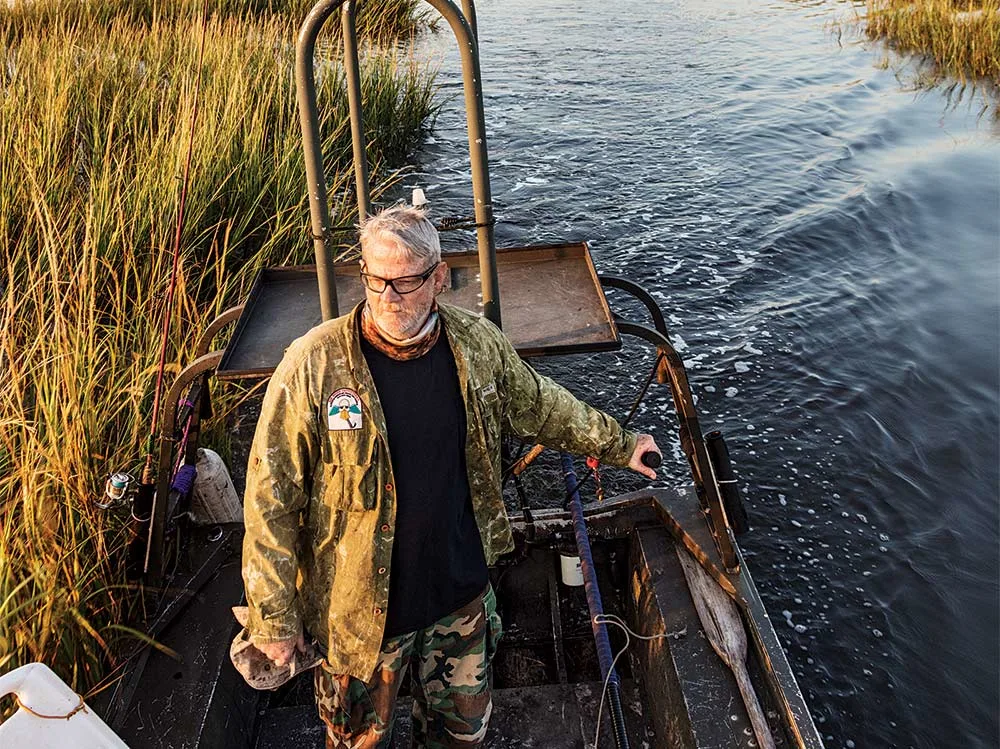
Walter “Joe Guide” Dinkins navigates the marsh from his johnboat. Cedric Angeles
History Lesson
Rail hunting is one of the oldest sporting pursuits in eastern America, although many modern hunters have never heard of such a thing. The birds are found wherever there are marshes and muck, fresh or salt. They range from Maine to Florida, packing into Jersey’s brackish rice marshes, skulking in the reeds throughout the Delmarva Peninsula of Chesapeake Bay, and congregating in impressive numbers in the Carolina marshes. Here, along the Cape Fear River estuary, it’s possible to bag king rail, the largest of the tribe; clapper rail, the predominant species in these parts; the uncommon Virginia rail; and the smallest of them all, the sora, or Carolina, rail. And you can heat up a shotgun barrel hunting these birds: Shooting a limit of clapper rails is common on a good tide, and the daily limit is 15 clapper and king rails in aggregate, plus another 25 sora or Virginia rails if you’re lucky enough to push into a flight of those smaller birds.
The traditional way to hunt marsh hens involves a gunner in the bow of the boat and a poleman, or pusher, in the back. Hunts must be carefully planned for the highest tides—typically full-moon or new-moon tides—that inundate the marshes and congregate the birds in the tallest clumps of reeds. The hunts aren’t marked by mornings or afternoons. It’s all about the tides, and some high tides might come so late in the day that you get only half an hour of decent gunning before sunset—a low return on all the energy required to get into rail-bird country. In the South, the best hunting comes on the heels of a storm.
“A full moon when there was a storm up north over the previous couple of days—that’s the big ticket,” Dinkins says. On a bright night, with a storm brewing, the birds will empty a feathered marsh in the north and greet a southern sunrise. In 1979, a rail banded at Cape May, New Jersey, was shot off the South Carolina coast at 11 a.m. the next day. When Hurricane Sandy pummeled the Jersey marshes five years ago, a rail flight covered up the Carolinas with birds like Dinkins had never seen.
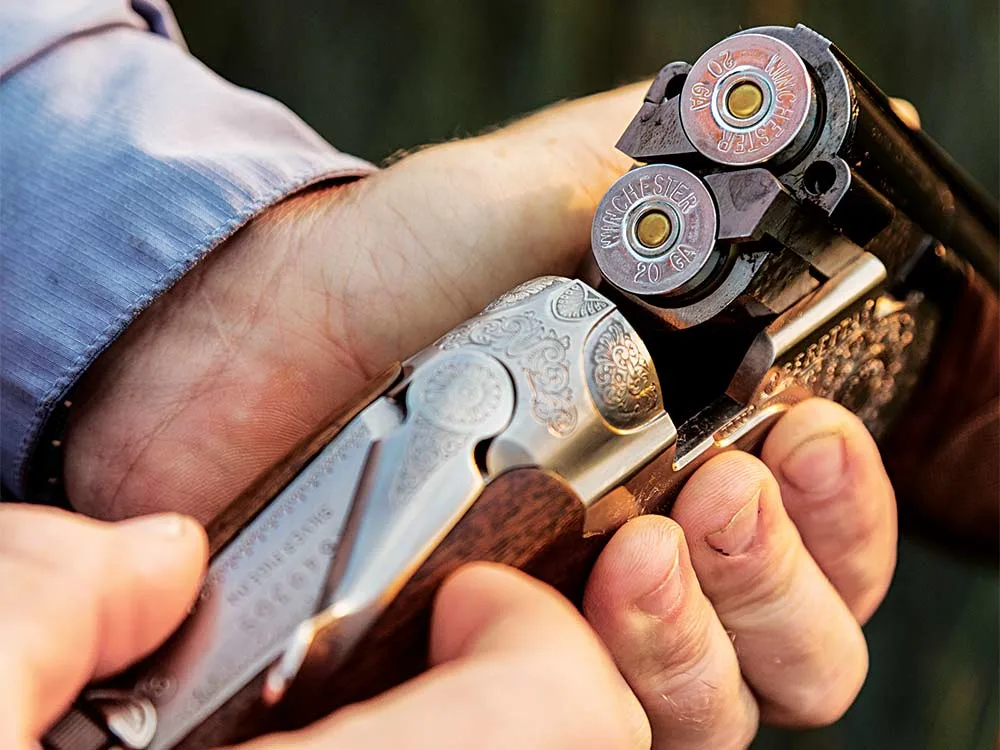
Reloading the 20-gauge. Cedric Angeles
Despite their long-range flight abilities, rails don’t really like to fly—and when they’re spooked in the marsh, they don’t go far. They’ll popcorn up and down in short hoppy flights of 50 or 60 yards. They’ll grasp submerged reeds with their feet and breathe with only their beaks out of the water. They can practically sprint across submerged vegetation, and they’ll ease up to the gunwales of a boat and hide at the waterline. While downing a rail flushed on a calm day is no big trick, a stiff coastal crosswind and a bucking front boat deck compound the challenge significantly. Early American sporting writers referred to rail hunting as “the sport of kings,” but a hunting duo in a $50,000 poling skiff today has no advantage over a couple of gunners in a johnboat.
Hunters in the 19th and early 20th centuries pushed after the birds in dugout canoes and wooden skiffs. They were a favorite target of wealthy sportsmen. President Benjamin Harrison hunted for sora rails in the 1890s. Teddy Roosevelt chased them before he won the White House. In those days, the takes were incredible. On September 8, 1846, one shooter in the tidal marshes below Philadelphia tallied 195 rails in a single tide—with a muzzleloading shotgun. In the last decades of the 19th century, hunters killed more than 100,000 sora rails each year along the rice meadows of New Jersey’s Maurice River. The gunners of one large club claimed to have killed 21,000 birds on a single tide. The best rail guides commanded steep prices. In the South Jersey rice marshes during the Great Depression, Dinkins tells me, a man could make $35 plus tip for a single tide’s pushing. “And that was back when people were struggling for less than a dollar a day,” he says.
In the Cape Fear River marshes, history surrounds us. A low spot in the dunes a few miles to the east is what used to be Corncake Inlet, where the Confederacy’s blockade runners would slip through Union lines under cover of darkness to sprint up to the port of Wilmington. Standing on the johnboat’s gunning deck, I can see the Bald Head Lighthouse, built in 1817, and the sunlight glinting on the waterfront of Southport, where Robert Ruark, a Field & Stream writer and author of The Old Man and the Boy
, bunked at his grandfather’s house in the 1920s and 1930s as they hunted marsh hens in these very mudflats.
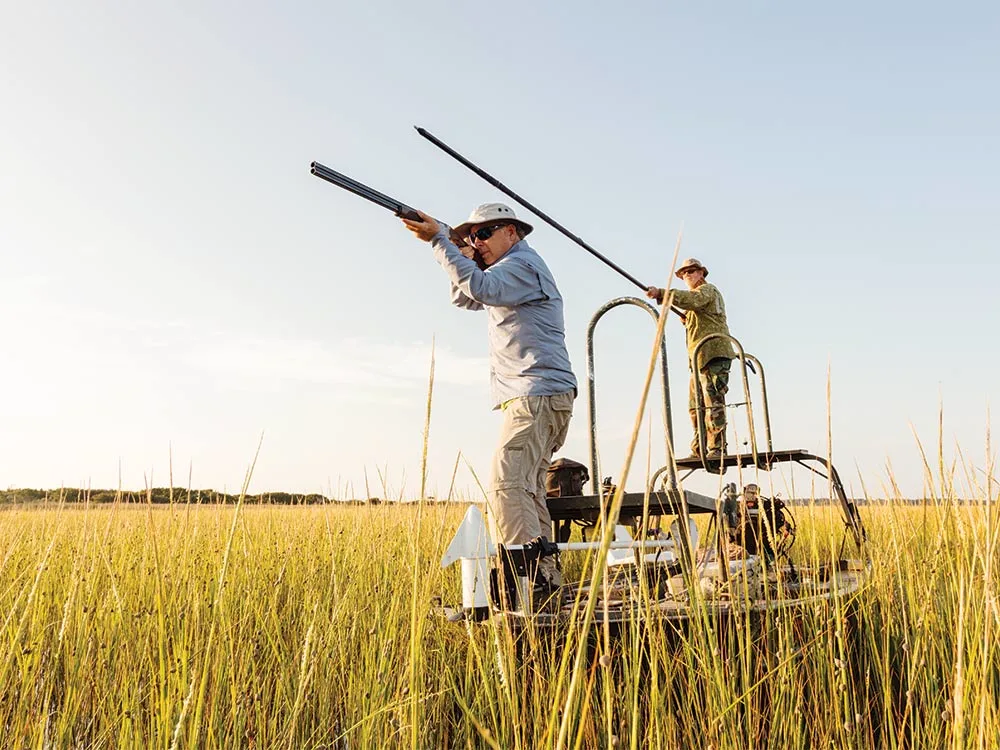
The author tracks a rail in the Cape Fear River. Cedric Angeles
Dinkins is as rooted in these old traditions as a clump of cordgrass. A 30-year veteran as a U.S. Army Reserve chaplain, with tours in Afghanistan, Africa, and Iraq, he grew up in the South Carolina Lowcountry, one of the last hotbeds of rail hunting. His father, an occasional quail hunting guide, read him stories from Ruark and Archibald Rutledge, the poet laureate of South Carolina in the early 20th century and a frequent contributor to Field & Stream and Outdoor Life. When Dinkins was 5 years old, his father guided the famed writer Havilah Babcock on a quail hunt and let Dinkins hitch along. Babcock jokingly called the young boy “Joe Guide” that day—a nickname Dinkins resurrected with his guide service
.
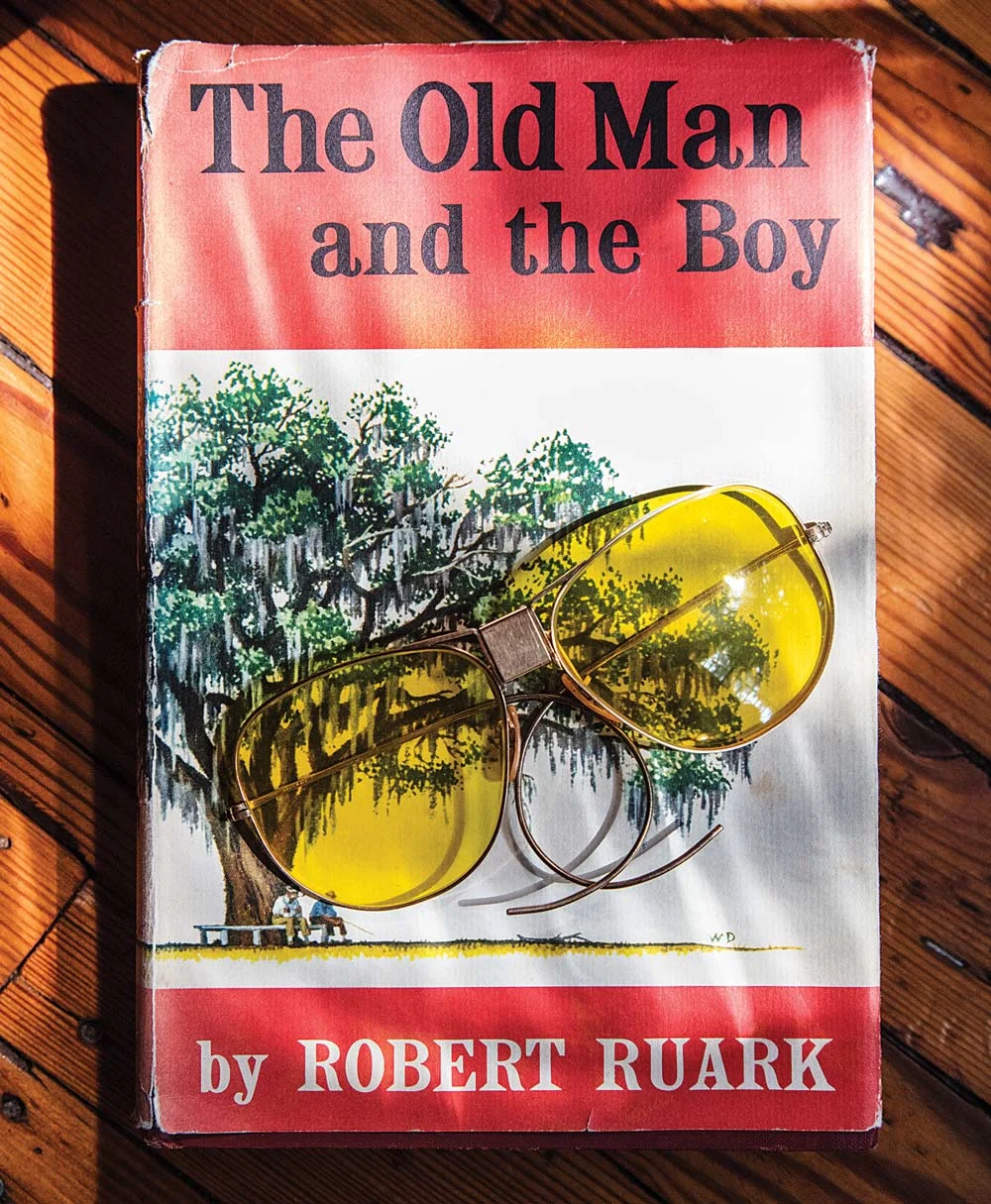
, by Robert Ruark Cedric Angeles
I’ve been a Ruark fan for decades and read The Old Man and the Boy
out loud, chapter by chapter, to my own son when he was a child. Dinkins considers the creeks and marshes of The Old Man and the Boy sacred ground and finds in me a kindred soul. We float through creeks that peter out into thin skims of water, even at high tide, recalling our favorite Ruark passages. Once, Dinkins leans on the pole and looks around quietly. This was the very place, he says, where Ruark rowed alone across the river when he learned of his grandfather’s death, to hole up behind Battery Island, alone in an old duck blind. I look around and see the same creeks and oyster bars, the same slant of salt marsh where the Old Man led the Boy along those first fraught steps toward manhood.
But there’s too little time to muse. For rail hunters, the clock is always ticking. The falling tide exposes more and more marsh, and the birds that were pushed to the tallest hummocks spread out and become harder to flush.
By federal law, you can’t run up on marsh hens with a motor, so we spot birds from the raised shooting deck and poling platform, then stalk them with a push pole, or we cut the motor and push into the densest cover that remains in the high water. Dinkins isn’t exactly a CrossFit poster child. He wears Crocs with no socks, a redfish sun Buff, and a desert-camo boonie hat, and he pulls a long-extinguished half-cigar from his lips only to drink his 30-ounce Dad’s Root Beer. But he’s still got the grit to push a gunner through a solid tide’s worth of rail marsh.
**Read Next: 60 Books Every Outdoorsman Should Read
**
Still, he’s huffing and puffing after 90 minutes on the pole platform, and I figure this hunt is pretty much cooked. Suddenly, he spots two birds skulking in a scimitar of cordgrass—a last-ditch chance to fill a limit. Dinkins poles into shotgun range, but the birds stick tight, loath to leave dense cover. We’re only 10 feet away when one of the rails shrinks off upwind, its body low to the water. The other is as nervous as a cat, poking his bill this way and that, trying to decipher his best chance of escape. When he launches, I give him a solid 18‑yard head start so the shotgun pattern opens a bit, and as he folds with the shot, I swing to cover the other bird, certain that he’d flush. He doesn’t even flinch. Standing on the bow deck, I cover his retreat with the shotgun bead, hollering and stomping. I’m not going to shoot a bird on the water. Dinkins laughs.
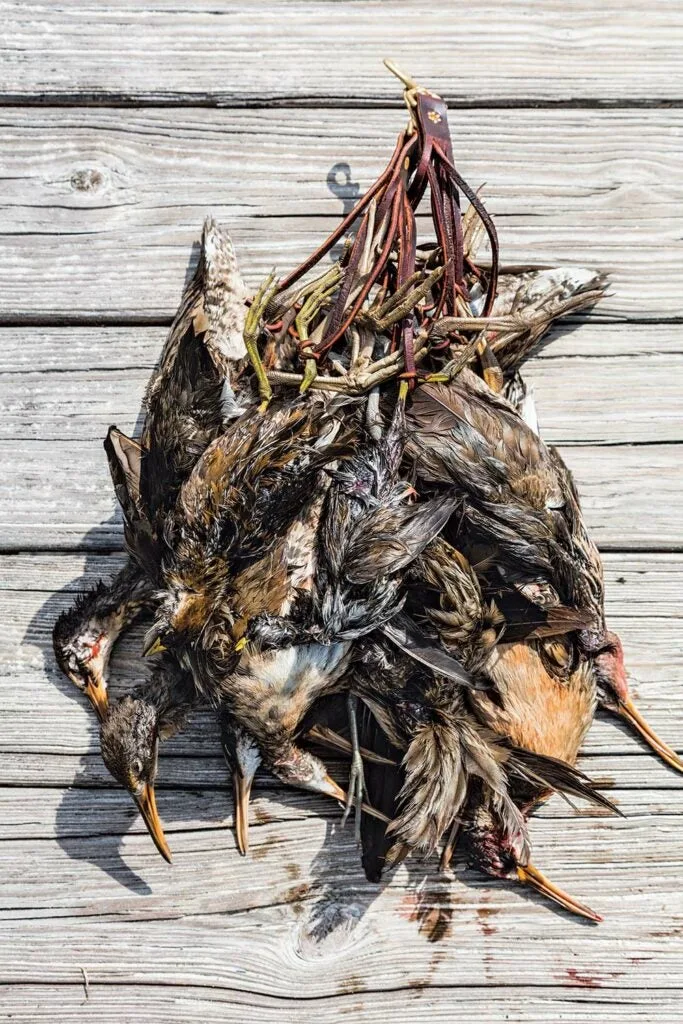
Day’s Bounty: A near limit of rails. Cedric Angeles
“Smart bird,” he says. “He knows there’s a lot more places to hide with this falling tide, so he beat us fair and square.”
Dinkins pushes the johnboat into the marsh creek channel and pulls the mud motor to life. He sucks down his root beer like Popeye’s spinach. We make a sharp turn around the first kink in the creek, and three clapper rails lope out of the reeds like drunks from a back alley. They’ve been within shooting range for 20 minutes.
“What’d I tell you?” he hollers over the motor’s din. “Dang birds!”
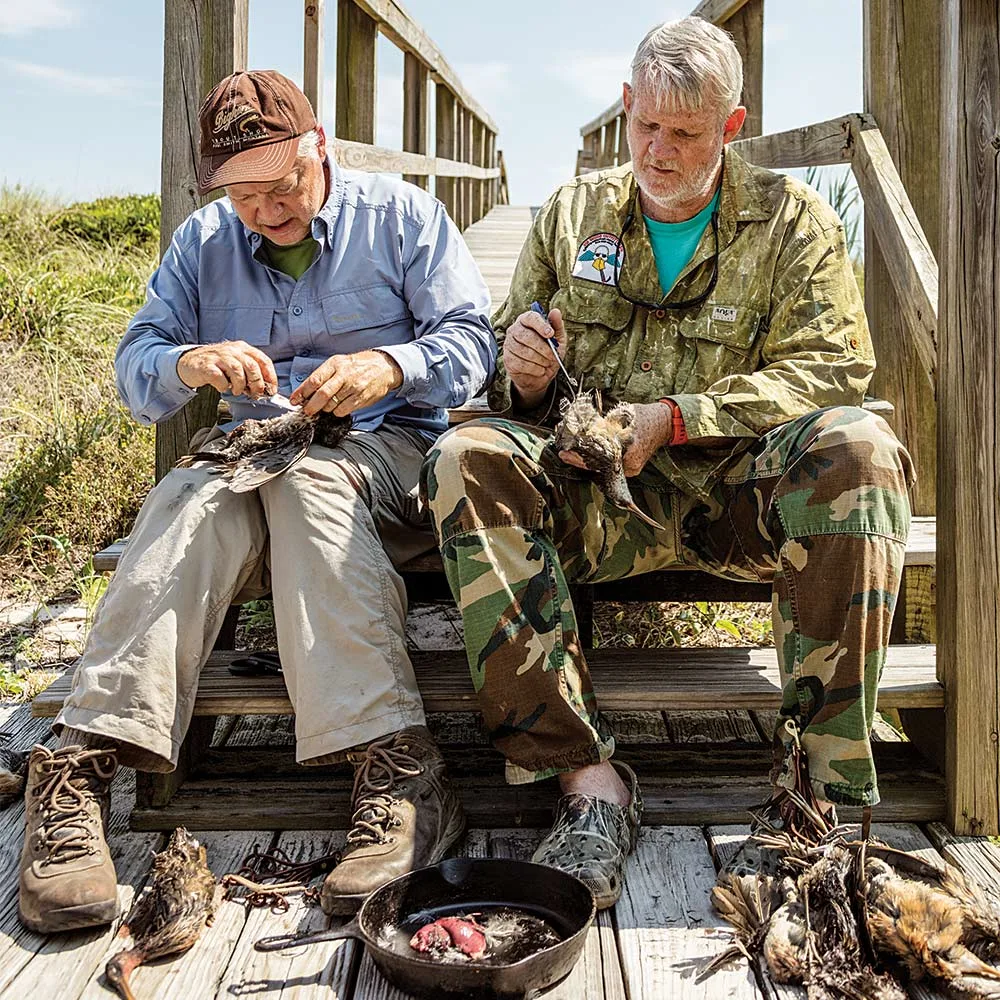
The author and Dinkins on cleaning duty. Cedric Angeles
An Acquired Taste
A plentiful quarry that you can hunt with sweat equity and anything from a johnboat to a canoe to a tricked-out flats skiff, and tons of public access—you’d think the marshes would be crawling with hunters. But there’s this: With the exception of the sora rail, which makes a living almost entirely in freshwater marshes, rail birds have a reputation of being nearly inedible. I’ve always heard they stink, wear feathers matted with rancid mud, and even when cleaned, soaked, brined, marinated, and rubbed in shrimp-boil spices, still taste like a rutting muskrat. Writing in The American Sportsmen
, probably the most popular hunting book in America in the 19th century, Elisha J. Lewis described them as “universally insipid, dry, and sedgy.”
But I didn’t buy it. For starters, Lewis didn’t have access to a modern cooler and a good refrigerator at his mom-and-pop motel back on the beach like I do. Even today, I figure that most rails are shot and then stew for several hours in the hot bottom of a sun-drenched johnboat in early autumn when temperatures easily top 90 degrees. In Dinkins’ boat, I made sure each bird went on ice as soon as we scooped it out of the water. Back at my rental cottage, I gut and skin the birds the minute I walk in the door and shove them all in the refrigerator.

Almost ready to cook—minus the feathers. Cedric Angeles
I hatch a plan to turn my 15-bird limit into something passable as dinner. A buddy of mine joins me for the meal, and we have big ideas and a bottle of Pedro Ximeniz Spanish sherry in case none of them pan out. A third of the birds go on a charcoal grill, seasoned with little more than olive oil, salt, and pepper; I want the marsh hen taste straight up with no chaser. Another third we dress with tarragon, thyme, and coarse pepper, then sauté whole in bacon fat and butter. I breast out the rest, soak the fillets in a bath of soy sauce and red wine, and sear them in a cast-iron pan for precisely three beer sips a side. We carry the cooked birds out to a long wooden boardwalk over sand dunes and eat them with our fingers, spitting bird shot and bones over the wooden railing.
I could barely get the rail grease off my hands before I started sorting gear for the next day’s shoot. Those birds were rich and smoky and scented with a light brine—like a mourning dove after a week at the beach. I’d shot those birds out of curiosity, mostly. But pure greed and gluttony would be my gunning companions the next day.
Hungry for More
The next morning kicks off with as Southern a ritual as I can pull together in the sparse environs of my hotel room: a breakfast of hot grits, instant coffee, and cold leftover clapper rails. I hop in Dinkins’ truck and we turn north up the coast for a second day’s hunt in the sprawl of salt marsh that lies along the Atlantic Intracoastal Waterway. I gnaw on rail drumsticks for half of the hourlong drive.
The sun is already scorching when we push into the wide sound behind a barrier island 20 miles north of Cape Fear’s marshes. The mud motor shudders over sandbars as dozens of ibis flush from the marsh like quail—the water nervous with mummichog and finger mullet, a soup of brackish glop dimpled with rise forms and fish Vs and pushes of unseen life. On the mainland shore, the early sun lights up million-dollar houses like giant gleaming teeth, but we turn our backs to everything but the braids of creek and an unfettered sweep of green marsh to the east. Not 10 minutes from the boat ramp, Dinkins kills the motor and we drift in the mouth of the tidal creek. It’s a remarkably accessible sanctuary with miles of public marsh on each side of the sound. Dinkins clambers up the poling platform, leans on the push pole, and strikes the accidental pose of a standing Rodin sculpture in jungle boots and five patterns of mismatched camo.
“Where would I go if I was a rail bird?” he says, thinking out loud. “Where would I hide?”
As if on cue, a clickity-clack of chatter rattles from the reeds 80 yards deeper into the marsh. Dinkins laughs and smacks the leaning post. “Hear him?” he asks, as excited as if he’d never heard a mud hen in his entire life. “Ol’ rail bird is nervous now. Knows we’re here and can’t figure out whether to run or hide. Let’s give that poor fellow a hand, help him make up his mind.”
And for the next 90 minutes, we lend our services to a dozen marsh hens in similar states of indecision as we push through a high ridge of marsh where the birds have gathered. A flight of rails seems to have settled in overnight, and they hang tight in the reeds, exhausted from their midnight ride from points north. They hunker down as the johnboat parts the marsh, Dinkins huffing on the push pole. Half the time they break from cover after we’ve already pushed past, like a big-woods buck sneaking across a hunter’s backtrail. “Mark! Mark!” Dinkins hollers out as marsh hens bolt left and right and far behind.
It’s a wild hour and a half, but when the tide turns, Dinkins studies the water pouring into the creek channel. Time to get out while the getting is possible, he says. With the gun cased and two birds shy of a limit on ice, we turn away from the sun climbing high above the Atlantic. Dinkins stands in the johnboat with his hand on the motor tiller, camouflage shirt unbuttoned to the waist, and when he cuts the corner off a bend in the marsh creek, a pair of birds flush from the reeds, followed by a single hot on their muddy feet.
“Rail birds!” he shouts reflexively as he cuts the motor, and I jump to the bow deck. “Mark! Mark!” he hollers as if I didn’t already know that the salt marsh had turned to brown feathers. I rip the shotgun from its case as two more clapper rails clatter out of the marsh, and I shove a single shell into the chamber of the over/under, swing on the butt end of the closest bird, and pull the trigger on an empty 20-gauge tube. I burst out laughing. Mud hens might not be so tough to hit, but you can’t kill them with good intentions.
Casing the shotgun, I’m already doing a bit of thinking on my own. High tide in the Carolina marshes is a three-hour drive from home. I keep a johnboat in my backyard. I could lash a cooler to the bench seat for a makeshift poling platform and push with the pole I cut for canoeing after bullfrogs. I’m no “Joe Guide” Dinkins, and it’d be a little squirrelly, but there’s a good chance I could pull this off. Or I could just call Dinkins.
“You get back home,” I holler over the clamor of the mud motor. “Let’s take a look at your calendar. See when the full moon falls next October.”
Dinkins grins. He’s seen this before. It doesn’t take much more than a high tide or two, a sunrise over the salt marsh, and a dose of sporting history to turn a man around on rails.

